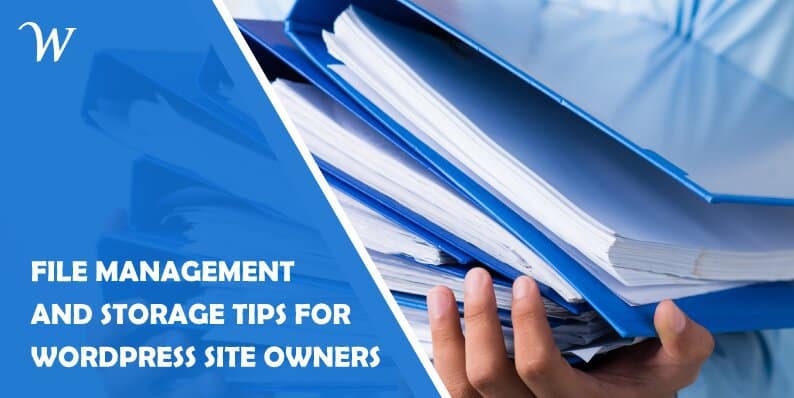As any webmaster will tell you, creating a WordPress site is incredibly easy – managing WordPress sites is a bit more hands-on and time-consuming. Especially when it comes to file management and storage space issues, webmasters have a never-ending job of performance optimization to keep their sites running smoothly for the user experience.
In this article, we’re going to give you some handy tips on how to send files as well as manage files and storage in WordPress, with some helpful solutions for common problems.
Using Windows File Server With Your Clients
It’s very difficult for webmasters and business owners to manage file permissions across site roles and team members. For example, you might want to offer free PDFs but restrict downloads of premium eBooks to paying customers, and also make sure that team members have the access permissions they need but restrict permissions they don’t.
Doing all of this through the WordPress dashboard is time-consuming, so a Windows file server will offer you a much better experience, like a centralized dashboard that will enable you to more conveniently categorize your website’s files and set group permissions in a few clicks.
This also comes in handy for better file management across the board, such as if you have a large library of media files that your team regularly accesses. One tech-focused blog I’ve worked with has a treasure trove of original product photographs, but going through them in the WordPress dashboard, and attaching them to posts, is a headache.
When looking for a document and file management plugin for WordPress, there are some key features you should consider:
- It allows you to display documents and files on the front-end. It also has an option to showcase individual files or a collection of files in an archive.
- Has security features, e.g., encryption as well as directory protection.
- Gives you full control in making documents accessible to users.
- Lets you create downloadable files.
Optimize Your Images for WebP
If your website has many photos, such as an eCommerce shop with hundreds of product photos, you absolutely need to consider image compression. Google developed the WebP image format as an alternative to JPEG, but it hasn’t become mainstream yet, as JPEG is still the standard seen across the web.
Truly though, I’m not sure why anybody wouldn’t want to use WebP, as it offers so many benefits. WebP is able to achieve up to 30% smaller file sizes without any perceptible loss in image quality.
This is significant for websites that display a lot of photos because not only do you save storage space; you also save server bandwidth and loading time both for yourself and your visitors. As the WebP file sizes are smaller than JPEG, they will load more quickly for your browsers and put less strain on your server performance with a high volume of traffic.
The main hurdle is converting your images to the WebP format, and perhaps that is why it hasn’t become mainstream yet. Command-line interfaces to convert folders are a headache for many people, and there aren’t many popularly known tools out there specifically intended for the conversion process unless you use a cloud-based service. So you may be interested in a list of free WebP converters.
Clear Out the Junk Files
Your WordPress site collects junk over time, like an inbox. If you don’t regularly clean out your inbox, you end up with thousands of junk emails that take up storage space.
A WordPress site is very much the same, but the type of junk it collects over time includes things like:
- Your domain email
- Old plugins and site themes
- Drafted posts
- Unused media files
It can be a headache to regularly clean out your WordPress database, so there are cleanser plugins that will automate most of it for you.
- Mastering How to Make a Bar Chart in Google Sheets for Effective Data Visualization - July 11, 2025
- How to print from an iPhone? - July 8, 2025
- What is the best AI tool for documenting code? - July 8, 2025
